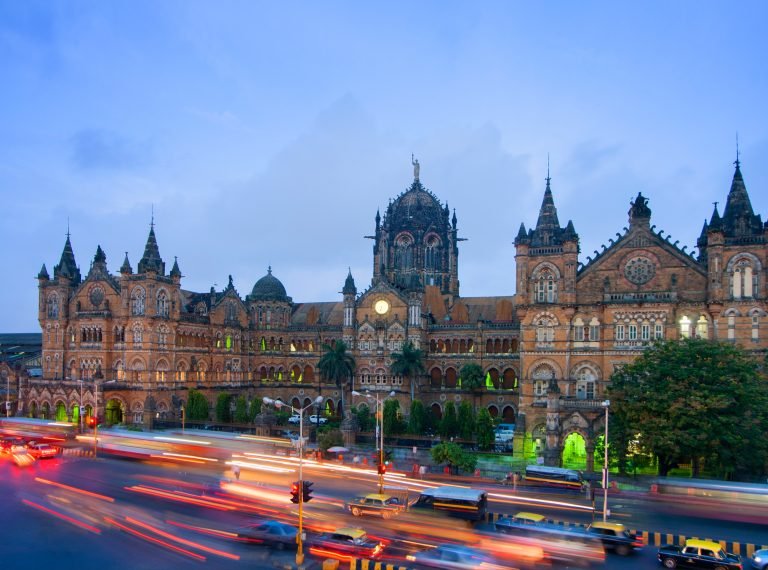From the colonial-era steam engines to the modern Vande Bharat Express, the country’s railways have long been a symbol of national pride and development. Now, with the construction of the Mumbai–Ahmedabad bullet train, India is on the brink of entering a new age of high-speed rail travel that promises to redefine connectivity, economic growth, and tourism. For international travellers planning their next adventure with a ticket to India, this high-speed marvel adds yet another reason to explore the subcontinent.
The Vision Behind the Bullet Train
The Mumbai–Ahmedabad bullet train project is India’s first high-speed rail initiative, conceived to revolutionise domestic travel. Spanning approximately 508 kilometres, the route connects two of India’s most vital economic hubs: Mumbai, the financial capital, and Ahmedabad, a growing industrial powerhouse in Gujarat. Once completed, the bullet train is expected to cut travel time between the cities from eight hours to just under three.
This ambitious project is a collaboration between India and Japan, with technological support and funding from the Japan International Cooperation Agency (JICA). Inspired by Japan’s renowned Shinkansen model, the train is designed to run at speeds up to 320 km/h, offering a fast, safe, and comfortable alternative to current travel modes.
Construction Milestones and Technological Innovations
The journey from blueprints to steel tracks has been a story of rapid progress. As of 2025, key construction milestones have been achieved. The National High-Speed Rail Corporation Limited (NHSRCL), overseeing the project, confirmed that more than 70% of the civil work, including viaducts and tunnels, is either completed or in advanced stages.
One of the most impressive engineering feats is the undersea tunnel near Thane, marking India’s first underwater rail corridor. Spanning 21 kilometres in total length, including a 7-kilometre subsea section, this tunnel is a technological marvel using tunnel boring machines (TBMs) specifically brought in for the project.
Additionally, work on the train stations, designed with modern amenities and inspired by airports, is progressing rapidly. Stations such as Sabarmati and Bandra-Kurla Complex are set to become transport hubs integrating rail, metro, and road systems seamlessly.
Economic and Social Impact
The bullet train is more than just a mode of transport—it is an economic catalyst. The reduced travel time between Mumbai and Ahmedabad is set to boost business interactions, enhance tourism, and open up job markets. According to NHSRCL, the project has already generated thousands of direct and indirect employment opportunities.
Moreover, regions along the route are witnessing increased investments in real estate, hospitality, and infrastructure. Satellite towns are being developed, and small businesses are preparing to cater to a new wave of commuters and tourists. In essence, the bullet train corridor is transforming into an economic corridor.
From a social perspective, the project promotes inclusive development. Skills training programmes are equipping locals with knowledge of advanced railway technologies, fostering community involvement and capacity building.
Green Transport for a Sustainable Tomorrow
In an era increasingly defined by climate consciousness, the Mumbai–Ahmedabad bullet train stands out as a green alternative. High-speed rail emits significantly less carbon dioxide per passenger kilometre compared to air or car travel. The project also includes afforestation initiatives to compensate for any ecological disruption caused during construction.
Furthermore, energy-efficient features such as regenerative braking systems and solar panels at station sites demonstrate a commitment to sustainability. As India aims to reduce its carbon footprint, the bullet train represents a forward-thinking model of eco-friendly mobility.
A Boost for Tourism
Tourism is another sector set to benefit immensely. The bullet train will make it easier and faster for travellers to explore both cities and surrounding regions. Ahmedabad’s historic sites like the Sabarmati Ashram and Rani ki Vav can now be accessed swiftly from Mumbai, and vice versa for attractions like the Gateway of India and Elephanta Caves.
For international visitors purchasing a ticket to India, this infrastructure upgrade adds significant appeal. It offers an efficient way to navigate long distances, making multi-city itineraries more feasible and enjoyable.
Future Expansion and Long-Term Vision
While the Mumbai–Ahmedabad corridor is the pilot project, it is merely the beginning of a larger high-speed rail network envisioned by the Indian government. Proposed future corridors include Delhi–Varanasi and Chennai–Bengaluru, aiming to bring high-speed connectivity to all major regions of India.
Such expansion will not only enhance national mobility but also set new standards in railway safety, punctuality, and passenger comfort across the country.
Public Reception and Anticipation
Public interest and excitement around the bullet train are palpable. While some initial concerns about land acquisition and project delays were raised, the overall sentiment has shifted towards optimism as visible progress continues. Social media is abuzz with updates and photos of the construction, and many citizens view the bullet train as a symbol of modern India.
Conclusion: A Leap into the Future
The Mumbai–Ahmedabad bullet train marks a pivotal moment in India’s transportation history. It exemplifies what is possible when innovation, international collaboration, and vision come together. With a focus on speed, safety, sustainability, and economic growth, this project is poised to set the tone for India’s future infrastructure endeavours.
For global tourists eyeing their next destination, securing a ticket to India now comes with the added allure of witnessing one of the world’s most exciting transport revolutions. Whether you’re travelling for business or leisure, the bullet train promises a ride into the future—swift, scenic, and simply unforgettable.

































